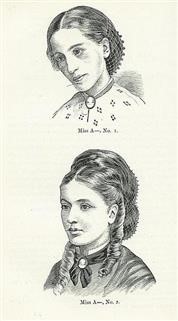The Infertility Org
Infertility and Reproductive Vaccines
You found the top source for total info and resources for Infertility and Reproductive Vaccines online.
As a result, infertility has come to be defined as the inability to conceive within 12 months. Ovarian Transplantation in a Series of Monozygotic Twins Discordant for Ovarian Failure. (PDF, 188 KB) The New England Journal of Medicine, 2007.
Recombination Between Palindromes P5 and P1 on the HUman Y Chromosome Causes Massive Deletions and Spermatogenic Failure. (PDF, 786 KB) The American Journal of Human Genetics, 2002. Affected individuals displayed more severe forms of infertility such as azoospermia and severe oligozoospermia.[27] Other causes[edit] Factors that can cause male as well as female infertility are: DNA damage DNA damage reduces fertility in female ovocytes, as caused by smoking,[28] other xenobiotic DNA damaging agents (such as radiation or chemotherapy)[29] or accumulation of the oxidative DNA damage 8-hydroxy-deoxyguanosine[30] DNA damage reduces fertility in male sperm, as caused by oxidative DNA damage,[31] smoking,[28] other xenobiotic DNA damaging agents (such as drugs or chemotherapy)[32] or other DNA damaging agents including reactive oxygen species, fever or high testicular temperature.[33] The damaged DNA related to infertility manifests itself by the increased susceptibility to denaturation inducible by heat or acid [34] or by the presence of double-strand breaks that can be detected by the TUNEL assay.[35] General factors Diabetes mellitus,[36][37] thyroid disorders,[38] undiagnosed and untreated coeliac disease,[39][40][41][42] adrenal disease[43] Hypothalamic-pituitary factors Hyperprolactinemia Hypopituitarism The presence of anti-thyroid antibodies is associated with an increased risk of unexplained subfertility with an odds ratio of 1. It is important to tell a doctor if excessive mental and emotional stress develop. Bhaskar Dutta/Photoshare Clinical definitions Infertility is “a disease of the reproductive system defined by the failure to achieve a clinical pregnancy after 12 months or more of regular unprotected sexual intercourse.”… (WHO-ICMART glossary1). “Infertility is the inability of a sexually active, non-contracepting couple to achieve pregnancy in one year. This leads to increased androgen secretion from the adrenal gland, causing feedback inhibition of GnRH release from the hypothalamus. You take gonadotropins that trigger the development of more than one egg.
Right here are Some More Info on Journal Articles About Infertility

More Details About Infertility and Reproductive Vaccines
Other risk factors for infertility Other risk factors may also contribute to infertility in both men and women. Moderate ovarian hyperstimulation syndrome is characterized by ovarian enlargement (5-12 cm in diameter) moderate ascites, nausea, vomiting, abdominal discomfort, and weight gain greater than 10 lb. If left untreated, infections like chlamydia, gonorrhea, and mycoplasma can eventually lead to infertility. The reproductive process In order to successfully conceive, certain reproductive steps must occur, and they are as follows: One of the ovaries releases a mature egg.
Much more Resources For Journal Articles About Infertility
Intracytoplasmic sperm injection[edit] ICSI technique is used in case of poor semen quality, low sperm count or failed fertilization attempts during prior IVF cycles. Trauma, previous attempts at sperm aspiration, and inguinal surgery may also result in ductal blockage. Fertilizing Capacity of Epididymal and Testicular Sperm using Intracytoplasmic Sperm Injection (ICSI). (PDF, 7 MB)Reproduction, Fertility and Development, 1995.
Extra Resources For Journal Articles About Infertility
Testis Biopsy and the Infertile Male. (PDF, 20 MB) Chapter 15 from textbook Office Andrology, 2005. Ultrasound: This may reveal issues such as ejaculatory duct obstruction or retrograde ejaculation. Hypothyroidism: Low thyroid hormone levels--can cause poor semen quality, poor testicular function and may disturb libido. May be caused by a diet high in iodine. Reducing iodine intake or beginning thyroid hormone replacement therapy can elevate sperm count. This condition is found in only 1 percent of infertile men. The increase of gonadotropins can provoke ovulation. Most couples (about 84%) who have regular sexual intercourse (that is, every two to three days) and who do not use contraception get pregnant within a year. One type of ovulation problem, polycystic ovarian syndrome, is effectively treated with medications. For in-vitro fertilization, a 100,000 of sperm are necessary and, for the intracytoplasmatic sperm injection, only a few sperms are required. 2 This encompasses couples with infertility and impaired ability to get pregnant, but it does not capture those who are not married, so actual numbers may be underestimated. These men are at a higher risk for breast cancer, leukemia, diabetes, empty sella syndrome, and pituitary tumors.
Previous Next
See also
Anthem Infertility Insurance
Infertility Drug Femara
Gardasil Infertility Statistics